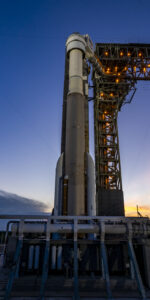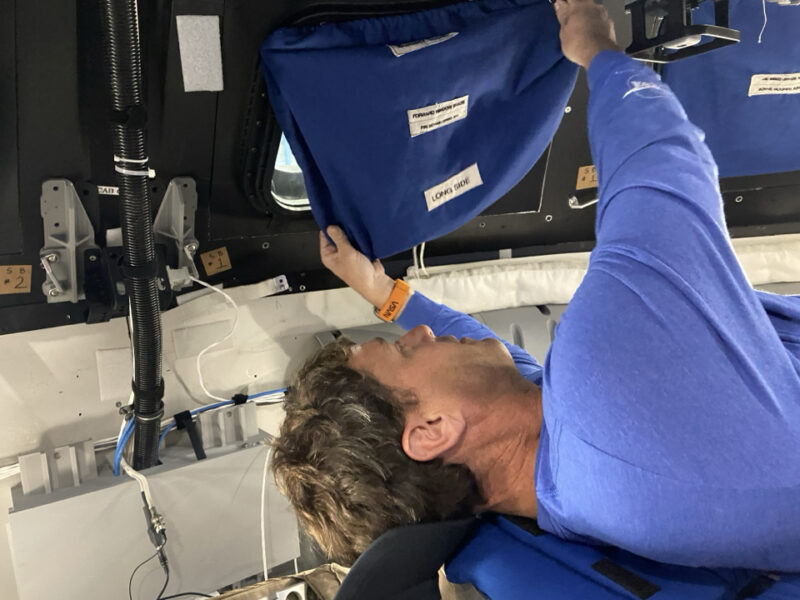
Next Friday, Boeing’s Starliner spacecraft is scheduled to lift off on its inaugural crewed flight following an eleven-day delay instigated by a faulty valve on its Atlas V launch vehicle. Starliner will be piloted by NASA astronauts Butch Wilmore and Suni Williams, who will become the tenth and eleventh Americans to fly into orbit inside a new spacecraft. Despite the fact that the U.S. space program is 66 years old, the debut of a new spacecraft is still a rare event. As Wilmore and Williams prepare to address their dense list of flight test objectives, Reid Wiseman’s Artemis 2 crew is training for their own historic mission. Alongside Starliner and SpaceX’s dependable Crew Dragon, Orion will be the third and final member of NASA’s next-generation fleet of human spacecraft, and the only member of the trio capable of venturing beyond Low Earth Orbit.
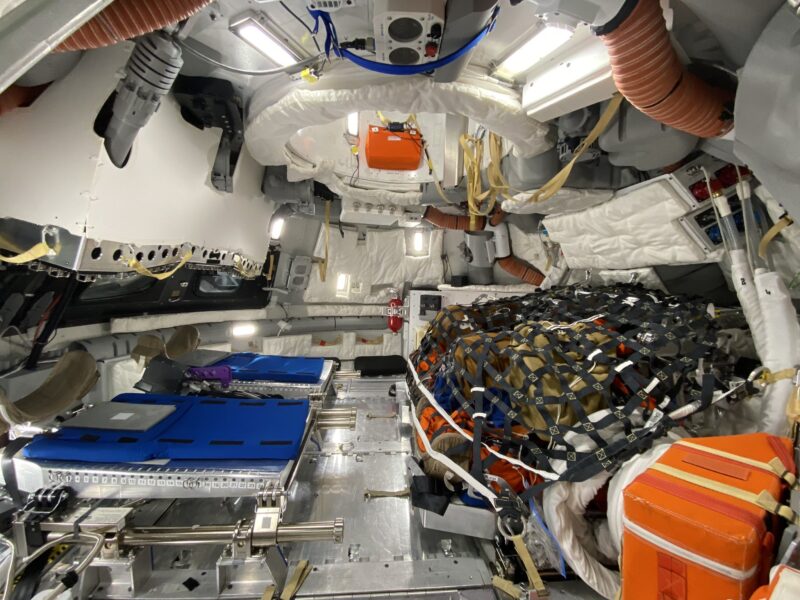
Wiseman, Victor Glover, Christina Koch, and Jeremy Hansen are engrossed in an intense training regimen which will ultimately enable them to put Orion through its paces. Their schedule can include activities which range from ascent simulations to water egress training to launch day rehearsals to lunar geology briefings. One key part of the Artemis 2 training flow is operational training inside the iconic Space Vehicle Mockup Facility. This cavernous building includes a full-scale mockup of the Orion crew cabin.
The mockup and the simulator complement each other. The former lacks the functional manual controls which are needed to rehearse dynamic phases of flight, such as launch and reentry. However, the horizontal orientation of its base allows the crew to practice the more mundane phases of flight and learn how to comfortably live and work inside the confined space.
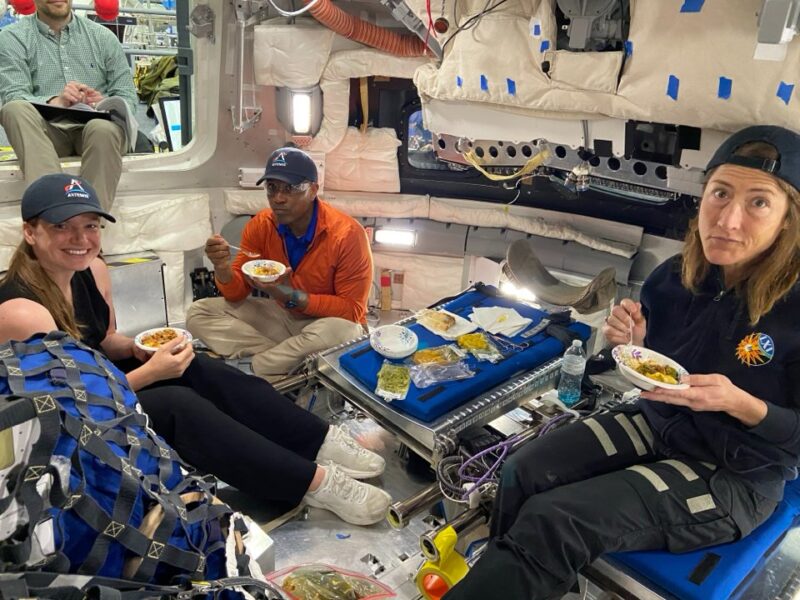
On Friday, May 3rd, Wiseman, Glover, Koch, and Hansen entered the Orion mockup to rehearse their first day in space. It was far from their first time inside the vehicle, but the event was their longest simulation to date. For any mission, NASA’s training staff scaffolds simulations and training exercises, increasing their complexity as the crew becomes more knowledgeable about their spacecraft and its systems. This technique is widely used in the classroom by educators, but it works just as well for teaching trained professionals – even astronauts – how to master a new set of skills. “As our preparations and training progresses, the simulations get closer and closer to the real thing,” said Hansen.
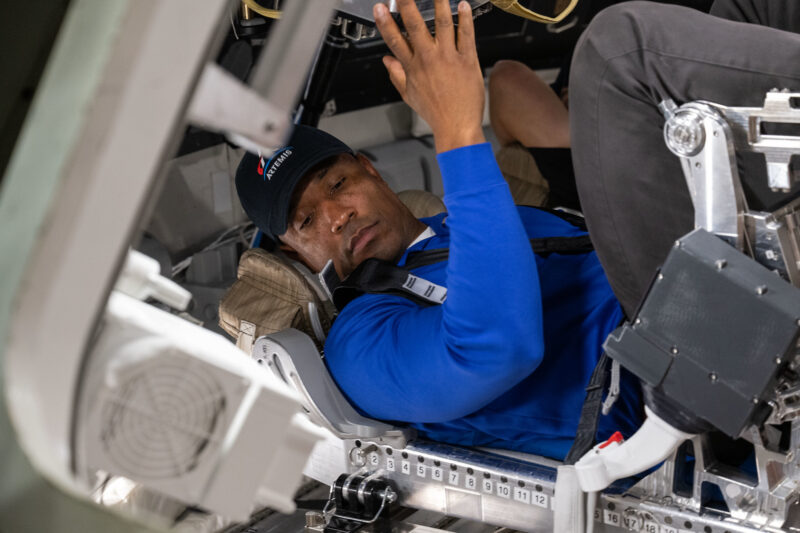
The Artemis 2 crew’s first day in orbit will be one of the most intense phases of the entire mission. After their SLS rocket inserts Orion into a highly elliptical orbit around Earth, Wiseman will hand the spacecraft’s controls over to Glover. Glover – himself a veteran of the first operational Crew Dragon mission – will put the ship through its paces over the course of a 70-minute rendezvous test, using the spent upper stage as a target. Once this essential demonstration is complete, the crew will settle in for the remainder of their first day in microgravity. Those waning hours of the day were the focus of Friday’s simulation.
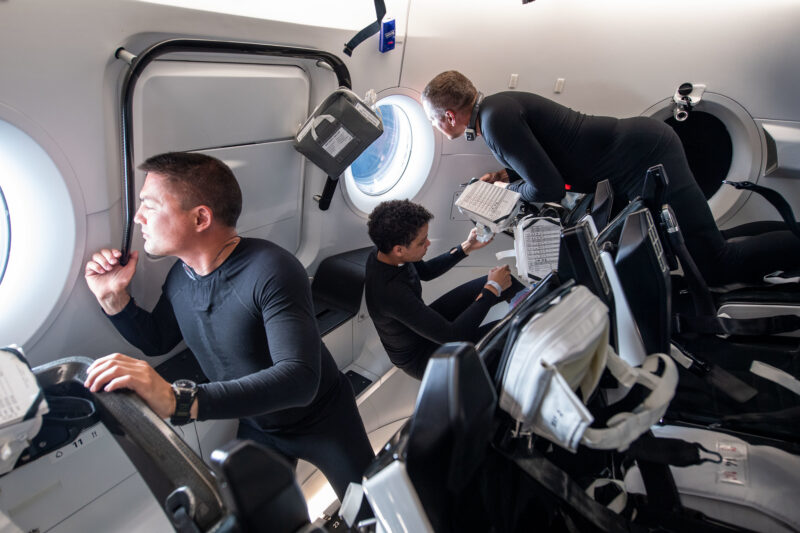
One focus of the exercise was determining how the astronauts will move about inside Orion’s cabin without disrupting their colleagues. As it is designed for long-duration missions in deep space, Orion is marginally larger than the spacecraft which astronauts fly today. Last year, Artemis 2 Human Rating Lead Jason Hutt told AmericaSpace, “From a numbers perspective, I would expect (Orion’s) cabin to be a little bit larger. We’re at about 380 cubic feet. I think Dragon comes in at about 310, I believe. You would expect ours to be a little bit larger because our design-to mission is a bit longer than theirs, and I think that is really the key.”
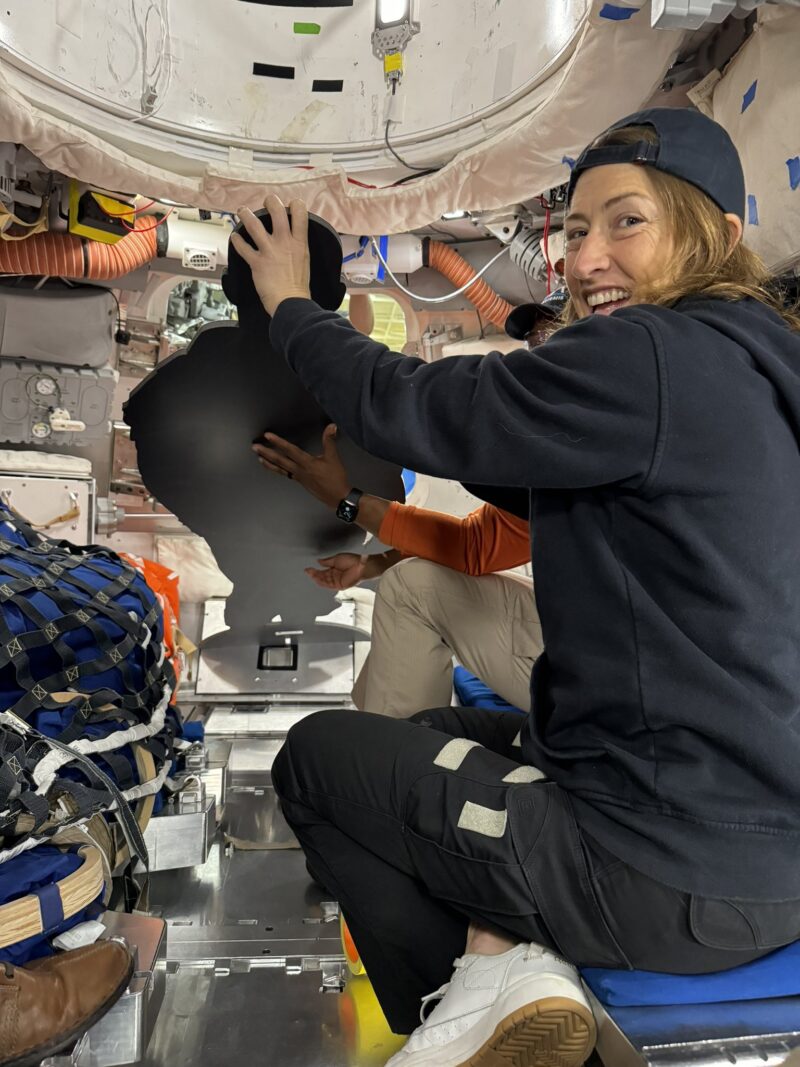
The shape of the capsule also impacts how crewmembers live inside it. While Crew Dragon and Starliner have similar internal volumes, Crew-4 pilot Bob Hines recently told Ars Technica that the SpaceX vehicle feels slightly larger due to its unique physical profile [1]. Dragon is taller than it is wide, which allows one or more astronauts to work inside its lower equipment bay while their colleagues float above them. Orion’s shape is nearly identical to Starliner’s, but it is just over 10% wider. While Orion’s interior appears to be comfortably sized for four people, it will still be a cozy space to inhabit for ten days. To learn how to operate within this restricted volume, the Artemis training team brought a cardboard cutout of Jeremy Hansen into the mockup. They experimented with placing the faux Hansen in various orientations while the other astronauts worked on their assigned tasks, such as rearranging cables inside the cabin. At six-foot-two, Hansen is the tallest member of the Artemis 2 crew.
The Orion team has devised multiple ingenious strategies which allow them maximize the utility of every cubic inch inside the capsule. Jason Hutt described these procedures in our Orion feature story, which can be read HERE.

One highlight of Friday’s training session was a simulated meal. Orion features a miniaturized galley which can warm and rehydrate prepackaged food. Inside the mockup, Wiseman, Glover, Koch, and Hansen repurposed the back panel of the pilot’s seat as an impromptu table and gathered around it for their evening meal. While the meal packages must adhere to strict food safety and dietary restrictions, astronauts are given a degree of agency when deciding what they will eat in space. In December, the quartet tasted a smorgasbord of meals and snacks at the Johnson Space Center’s Space Food Lab and selected their favorite entrees for their lunar voyage. Hansen specifically mentioned that he will carry maple cream cookies from his home country of Canada to share with his crewmates [2].
The quartet also practiced how to configure Orion’s cabin to permit a peaceful night of rest. Wiseman installed opaque cloth covers over the capsule’s four windows to block out stray light from the Sun and the Earth; the latter will loom large in their field of view throughout Orion’s 24-hour checkout orbit. They then stretched their sleeping bags across the crew cabin. During a sleep shift, the bags will occupy much of the crew cabin.
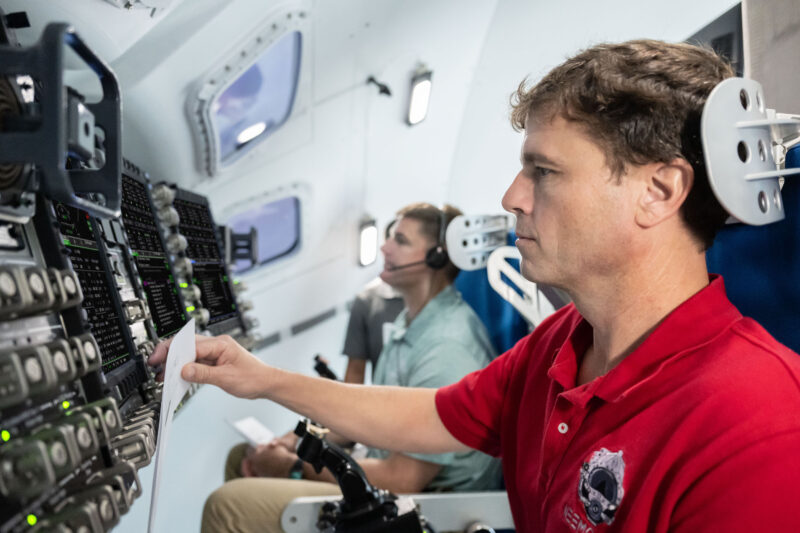
Other elements of the training program are also progressing apace. For several months, Reid Wiseman has graciously produced regular video updates to keep the public apprised of his crew’s progress, which he releases on a weekly basis using the social media platforms X (formerly known as Twitter) and Instagram. Last week, Wiseman remarked, “On Tuesday (April 23rd), Victor Glover and I were in the [simulator], going through some off-nominal burn targeting and how we will do our trajectory corrections when things aren’t going exactly as planned” [3]. He added, “On Thursday, Victor Glover and I were back in the simulator, doing what was probably the most fun event that he and I have had together: piloting the Orion spacecraft through a series of maneuvers to either track the Sun or to track stars.”
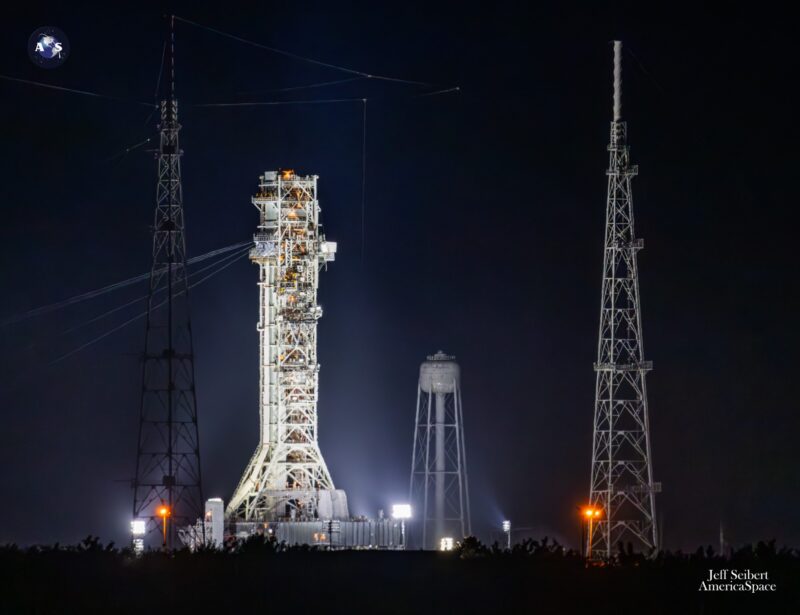
It remains uncertain when the Artemis 2 crew will be able to put their skills to work in cislunar space. In January, the mission was postponed to September of 2025 to rectify issues with Orion’s life support system and batteries. Last week, NASA’s Office of the Inspector General released an audit on the agency’s preparations for Artemis 2. The document revealed several previously undisclosed issues with the performance of Artemis 1’s heat shield which may impinge upon the safety of the crew. NASA had not decided how to mitigate these risks; if physical hardware changes are necessary, they may necessitate additional delays. Despite this, it is encouraging to see the first Moon-bound crew in half a century preparing for their flight. Whenever Orion is deemed safe for flight, Wiseman, Glover, Koch, and Hansen will be ready and waiting to etch their names into history.




